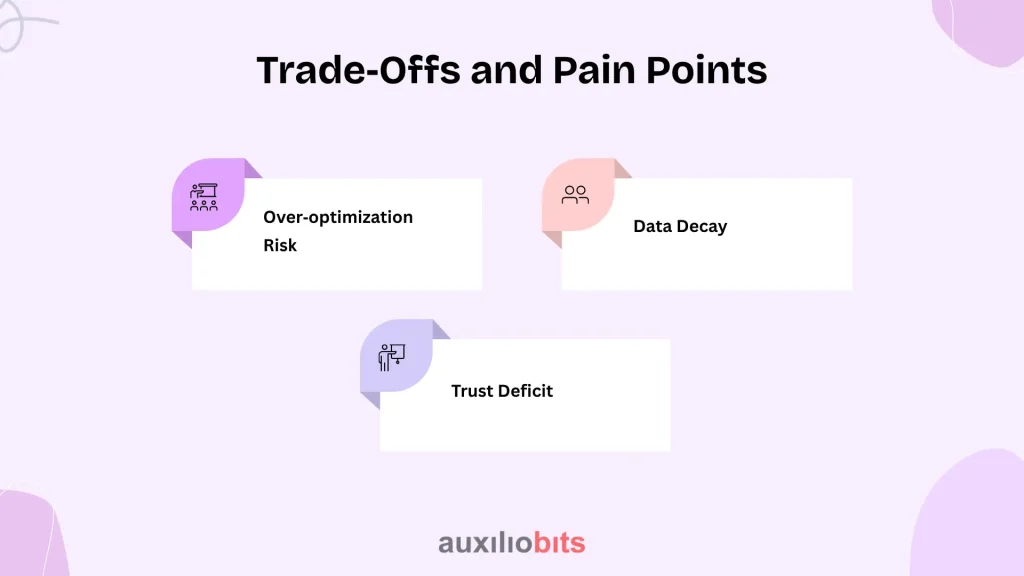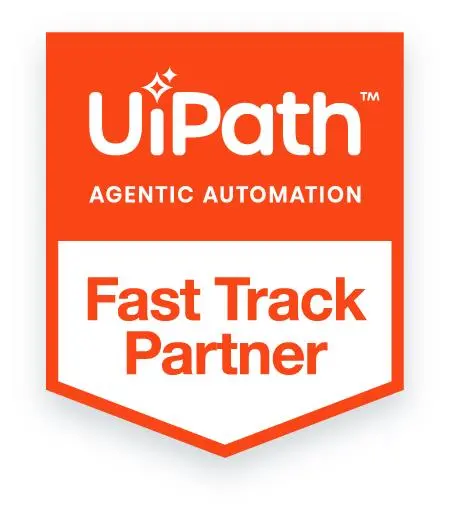
Key Takeaways
- Planning is now probabilistic, not fixed. Agent networks enable predictive load planning by continuously negotiating future demand and capacity, reducing reliance on static forecasts.
- Distributed agents act as autonomous collaborators. Each stakeholder—shipper, carrier, broker, or infrastructure—can dynamically communicate and recalibrate plans in near-real-time.
- Predictive planning reduces inefficiencies. By anticipating surges, equipment constraints, and congestion, companies can cut empty miles, optimize truck utilization, and lower total landed costs.
- Humans still play a vital role. Planners focus on exceptions, VIP customers, and relationship-driven decisions, while agents handle combinatorial allocations and repetitive calculations.
- Integration and trust remain key challenges. Legacy systems, fragmented platforms, and data decay can undermine predictive capabilities, while over-optimization and perception of bias must be managed carefully.
In freight transport, everyone obsesses over execution—getting trucks loaded on time, securing drivers, meeting cutoffs. Less discussed, but arguably more consequential, is planning. Not slotting loads a week ahead, but predicting the shape of demand, anticipating equipment constraints, and orchestrating capacity before the phone rings with a last‑minute panic request. That’s where agent networks for predictive load planning are quietly reshaping the game.
This isn’t the typical AI‑platform hype machine. Predictive load planning isn’t magic forecasting. It’s coordination across a network of semi‑autonomous software agents that represent different stakeholders—shippers, carriers, forwarders, even ports and terminals—constantly negotiating and recalibrating so transportation plans don’t just react, they anticipate.
Also read: Agent‑driven supply chain visibility: real‑time tracking, forecasting, and adjustments
Why Planning Breaks in the Real World
Talk to most logistics managers and they’ll bluntly admit: their “plans” degrade within 24 hours of publication. Why?
- Demand Volatility: A retailer launches a flash sale, and order volumes double overnight. Forecast accuracy is instantly obsolete.
- Capacity Constraints: Driver shortages introduce variability at the very moment demand spikes.
- Operational Disturbances: Port congestion, weather events, or simply a late supplier upstream ripple into transport schedules.
- Information Asymmetry: Shippers don’t know which carriers are really available; carriers don’t know which loads are likely to firm up.
The result is firefighting—freight tendered at the last minute, premium rates paid, service reliability compromised. Human planners, however skilled, simply cannot juggle these overlapping uncertainties in real‑time across hundreds of movements.
Agents as Distributed Planners, Not Just Bots
It’s useful to picture agents here less as algorithms and more as autonomous colleagues in a planning room. Each agent captures a bounded set of decisions:
- Shipper Agent represents forecasted demand, constraints from dock schedules, delivery service levels, and penalties for late arrivals.
- Carrier Agent weighs equipment availability, driver hours‑of‑service windows, and cost structures.
- Broker/3PL Agent sits between, reconciling gaps and arbitrating market signals.
- Infrastructure Agent mirrors ports, intermodal yards, or customs nodes that can unexpectedly restrict flow.
Instead of a monolithic model dictating the future, you get a conversation of agents proposing, retracting, and recalibrating plans in near real‑time. That conversational architecture is surprisingly robust against the uncertainty and fragmentation of transport ecosystems.
Predictive Over Reactive
The true value of an agent network isn’t just faster reallocation when trouble surfaces—it’s predicting trouble before it surfaces.
- Probabilistic Demand Indicators: Shipper agents can ingest POS data, production schedules, and marketing calendars to anticipate surges. That’s not just a forecast; it’s a dynamic probability distribution exposed to carrier agents.
- Equipment Migration: Carrier agents simulate tractor‑trailer migration days ahead. If 40 reefers are due back in Chicago, they can flag potential surplus/deficit scenarios, enabling re‑routing of loads to balance equipment.
- Risk Hotspots: Infrastructure agents publish congestion likelihoods (say, based on historical drayage wait times at the Port of Savannah in Q4). Planning agents then adjust target departure windows preemptively.
You could think of it almost like a stock market. Each agent is making bets (offers, requests, hedges) on what the next few days will require. The aggregation of those bets becomes the predictive plan. Unlike static forecasts, it’s continuously alive.
Example: Midwestern Food Distributor
A food distributor in Illinois put agent predictive planning into practice with one of its most painful lanes—Chicago to St. Louis. Historically, they committed too many reefer trucks in advance. Then, if demand dipped, empty miles skyrocketed on return.
When they deployed shipper and carrier agents:
- The shipper agent published a probability range of outbound volumes rather than a single hard number.
- Carrier agents responded with flexible commitments, offering soft capacity guarantees with tiered penalties or pricing for deviation.
- The broker agent orchestrated “just‑in‑time” confirmation based on how close demand signals firmed.
Outcome? Empty miles dropped 12%. And carriers, counterintuitively, were happier: they weren’t whipped with last‑minute cancellations; instead, they had a graduated view of risk exposure. The distributor spent marginally more on some runs, but overall, the total landed cost fell.
How Agents Talk: Negotiation Protocols
In theory, load planning could be handled by a centralized optimization model. In practice, such models collapse under volume and uncertainty. The agent network thrives because of its negotiation architecture.
- Auction‑Style Protocols: Loads are offered, bids placed, and retractable until certain cut‑off thresholds.
- Scorecard Matching: Carrier bids aren’t just lowest price wins; agents rank them against service reliability, historical dwell, and safety records.
- Rolling Horizon Plans: Instead of one static weekly master plan, agents revise allocations on 12‑hour or 24‑hour rolling bases.
This cadence matters. Humans crave certainty; operations demand flexibility. The negotiation allows both. Shippers can commit partially, carriers can lock in baselines, and both can leave room for predictive corrections.
Trade‑Offs and Pain Points
Nothing’s perfect—agent networks can complicate as much as they simplify.

- Over‑optimization Risk: Plans veer into unnatural complexity—too many small load splits or quirky lane assignments. In real life, dispatchers hate that kind of micro‑tuning.
- Trust Deficit: Smaller carriers suspect that agents running on “big shipper” platforms are rigged against them. Sometimes, frankly, they’re right.
- Data Decay: Predictive power fades quickly if input data isn’t refreshed. Outdated routing guides or stale equipment locations neuter the system.
There have been deployments stalled because the predictive magic promised in pilots cratered when feeds weren’t maintained. A truck GPS feed lagging 6 hours should not be feeding a “real‑time” allocation engine—but in practice, it does.
Human Planners Don’t Disappear
It’s tempting to imagine automation eliminating transportation planners. Reality is less dramatic. What happens is refocusing.
- Humans evaluate exceptions: VIP customers, hazmat quirks, relationship‑driven decisions.
- Agents handle combinatorial allocation math.
- Together, they co‑plan in iterative loops.
Predictive Load Planning Meets Contracting
Carriers don’t survive on pure spot freight. Contracting practices matter. Predictive agent networks provide new shapes of contracting:
- Flexible Mini‑Bids: Instead of year‑long lanes, shipper and carrier agents execute rolling 4‑week commitments, re‑negotiated automatically as predictive signals fluctuate.
- Capacity Futures: Think of it like an option—carriers sell the option of a truck five days from now. Shipper agents exercise or not depending on actual demand.
- Penalty/Bonus Clauses: Embedded dynamically, based on agent‑generated risk scoring of each lane.
Some markets will resist these constructs, but where they take hold, they broaden collaboration beyond the blunt “locked contracts vs. last‑minute spot” dichotomy.
Real‑World Integrations and the Mess Between Systems
What cripples adoption is rarely the agent logic—it’s the plumbing.
- Legacy TMS: A surprising share of carriers still run green‑screen software built in the early 2000s. Agent APIs struggle to interface with them. Middleware has to do the heavy lifting.
- Carrier Fatigue: Smaller haulers complain about “another portal” syndrome. If they need five apps to participate, engagement dies. The best networks integrate unobtrusively into what operators already use.
- Latency vs. Batch: Some systems naively push hourly syncs. That’s basically useless when predictive load planning depends on near-real-time changes.
Vendors like project44, FourKites, and niche startups are building the connective tissue, but true seamless interoperability is years away.
Interaction with Sustainability
Regulation is forcing planners to factor decarbonization into routines. Agents are naturally good at this:
- A carrier agent can publish emissions profiles per truck type.
- The orchestration logic can prioritize fewer empty miles not only for cost but as a sustainability KPI.
- Shipper agents can value emissions avoidance explicitly in their scoring, sometimes accepting higher rates to cut CO₂ by 10–15%.
Future Directions
So, where is this headed? Some possibilities:
- Nested Digital Twins: Agents simulating weeks out, connected into warehouse digital twins and even port congestion models, to co‑predict across the full supply chain.
- Carrier Alliances: Owner‑operators pooling into shared carrier agents to gain bargaining symmetry vs. mega fleets. Might fail politically; still interesting structurally.
- AI‑driven Market Making: Predictive capacity marketplaces resembling finance, though regulatory oversight will lag.
The challenge? Increased automation can over‑rationalize. Transportation remains messy because human relationships, exceptions, and local improvisation create resilience. Agents risk “optimizing” that away, leaving brittle systems that fail hard under stress. Balance matters.
Final Thoughts
Predictive load planning powered by agent networks isn’t a shiny “disruption.” It’s more of a scaffolding. A framework that allows planning to bend rather than snap under freight volatility.
Yes, it reduces empty miles. Yes, it saves cost. But the better story is how it re‑casts relationships between shippers and carriers. Instead of load planning as a one‑off transactional fight, it becomes a continuous, probabilistic negotiation. That’s more honest about how the world works. And if you’ve ever sat in a dispatch office the night before Black Friday, watching the phones melt while routes crumble, you realize prediction plus orchestration isn’t








